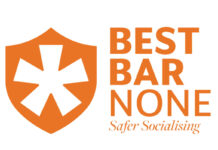Detail is needed on the measures operators will be required to implement to make bars and restaurants ‘COVID-19 Secure’, writes architect Michael Kelman

THE UK has begun to cautiously reopen after a lengthy lockdown, the initial shock of the closure of our industry has slowly begun to subside, and, for many operators, the focus is now shifting to find practical ways to reopen premises whilst meeting the requirements defined as ‘COVID-19 Secure’.
Both the UK and Scottish governments are shortly looking to release COVID-19 Secure guidelines for our sector, with the Scottish Government’s planned release date being June 18.
Since early May, Leask Architects has been pushing both the UK and Scottish governments for clarity on the scope and detail of any guidance that would be forthcoming. Our concerns have specifically been in relation to the space planning of trading areas, specification of screening and toilet access strategies. We have asked whether there would be inspections of premises prior to or shortly after opening and who would be the enforcing authority. These are key issues that many operators have and are therefore reluctant to embark on changes until there is some official guidance.
Operators should be comfortable with managing enhanced cleaning regimes, split-shift working, and delivery and collection strategies. Whilst any guidance on these matters is of course welcome, there is a need for detailed advice on the aforementioned issues otherwise we will have a wide interpretation of the guidance and implementation of solutions.
A month ago, we issued the Leask Architects COVID-19 Design Strategy document for circulation to our clients, contacts and government. The objective was to highlight that detailed guidance would be required for our sector.
Last week we were invited to review the UK Government’s draft guidance document which has been prepared by the Department for Business, Energy and Industrial Strategy (BEIS) with key stakeholder input. Whilst this will be a UK Government COVID-19 Secure guidance document for our sector there has been devolved administration input as well. Public Health is a devolved power, however we suspect the Scottish guidance will be very similar.
We are of the view that the draft BEIS guidance document is fairly comprehensive in terms of offering operational, process and management guidelines for consideration in COVID-19 risk assessments.
The draft document does, however, lack the specification detail noted above on managing social distancing in the trading space. We have suggested that further details and example diagrams are included to show solutions which would be acceptable. There is a need for detailed prescriptive guidance and we made a number of recommendations for inclusion, including:
- As it is recognised that being seated face to face poses the greatest risk, we would welcome confirmation that back to back seats can be set closer than 2m together, perhaps 1m without any screening.
- Similarly, side by side seating could be considered for setting out below 2m.
- Clarification on minimum screen specification between loose and fixed seating is needed. For example, all screens could be 1650mm high and must not have gaps at the bottom of more than 100mm and they must be of a width commensurate with the backs of the chairs they are protecting. We are currently seeing operators buy such screens that meet this requirement and others are placing Perspex trade counter upstands on empty tables between covers. This creates dubiety and guidance should clarify what is and is not acceptable.
- An average adult requires 600mm width when moving and therefore remaining 2m from others when going to your table or the toilet would require 4.6m. We would like confirmation that similar to the use of public transport the breaches are allowable when moving as there is no other practical solution.
- We support the trade’s push to limit social distancing to 1m as space-planning more oddly-shaped older buildings impacts more greatly on occupancy using the 2m rule.
- For those operators who can’t benefit from a one-way circular toilet access route, comfort is required that close passing in corridors where unavoidable is allowable subject to mitigation. The rules state that 2m should be adhered to where possible. Many toilets are down lengthy corridors and going to the toilet is a necessary activity which operators then need to manage where people can’t be 2m apart. We have asked for an example of how this could be done as face coverings are not acceptable mitigation on their own. Simple “keep left and look left” fun signage could be a solution.
Despite the request for prescriptive detail we assume the guidance will remain general. The purpose of the guidance is to assist operators in producing risk assessments and self-confirming that they have complied with the five main criteria to be COVID-19 Secure. The five criteria are: carrying out a risk assessment, having hygiene procedures in place, helping people work from home where possible, taking all reasonable steps to ensure 2m social distancing can be maintained, and, where not possible, managing the transmission risk. Operators can sign a declaration for staff and public display.
The draft guidance reinforces that it is an employer’s responsibility to protect workers and others from health and safety risks. The enforcing authority for this purpose is the HSE and local authority. We do not believe local authorities will have the resources to inspect and unless there is prescriptive detail (such as for HMO licences) then assessment becomes very subjective.
The real arbiter of how well premises have been adapted is ultimately going to be your staff and, of course, your customers who will return if they feel safe and have had an enjoyable experience.
Going out to eat and drink is a socially enjoyable experience and we must create environments where the customers want to come back. This has always been the case and is unchanged in the presence of COVID-19.
We see the challenges posed by COVID-19 as a chance to share our collective expertise and specialist knowledge to help the industry as it recovers. This could perhaps be the beginning of a new period of innovation, with design solutions to help create new business models that are flexible, reactive and adaptable, collectively changing the industry to meet any future challenges.
We hope over the coming weeks the release and implementation of COVID-19 Secure guidelines help us navigate towards a safe platform for businesses to open their doors again.
Michael Kelman is director at Leask Architects, Edinburgh























